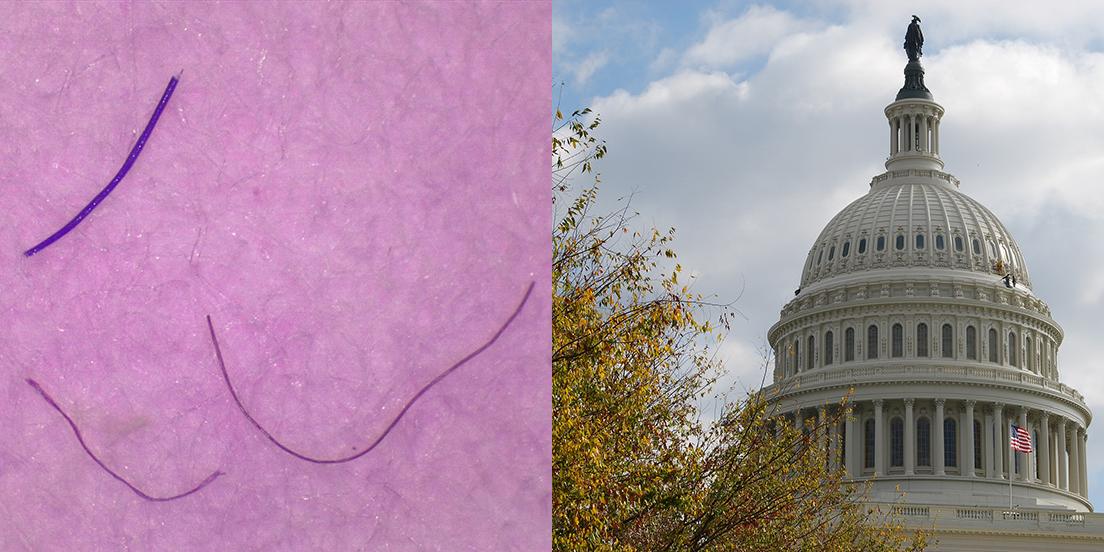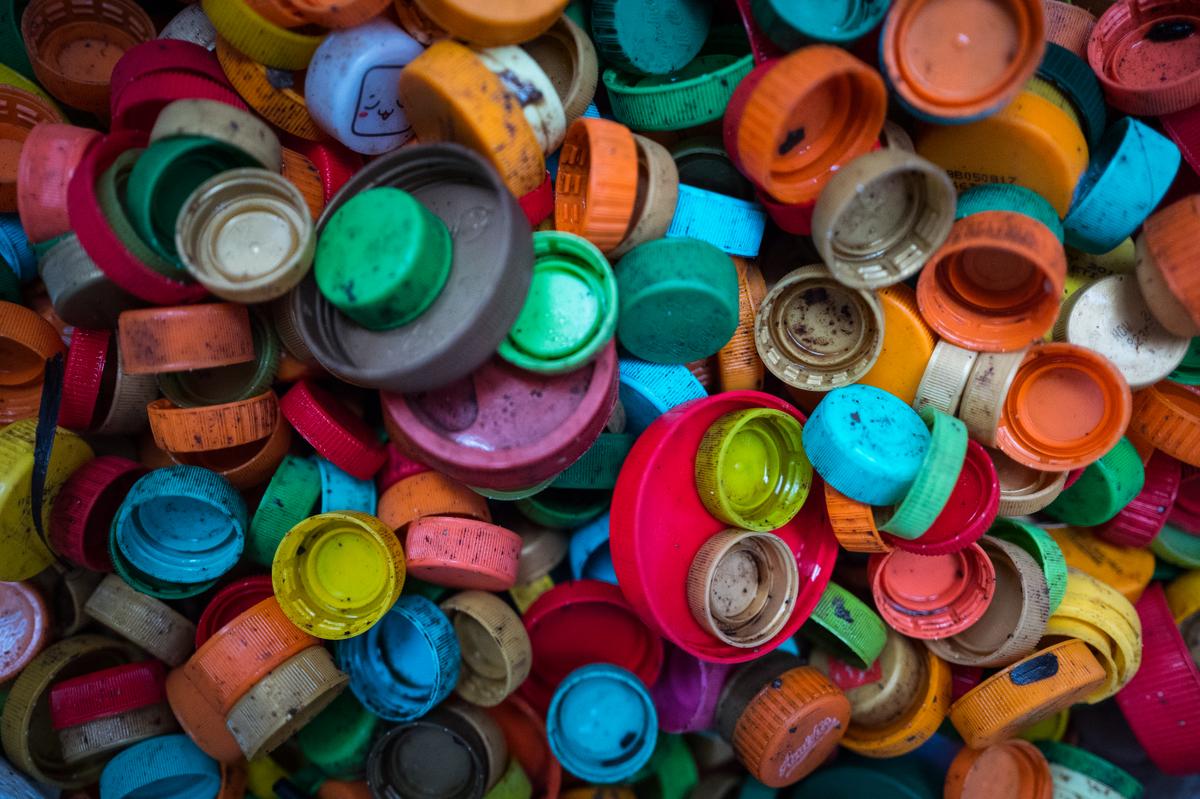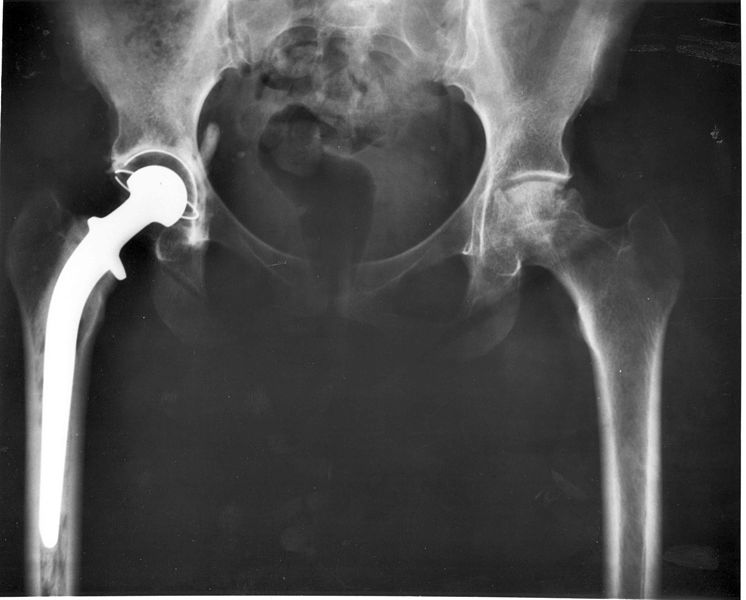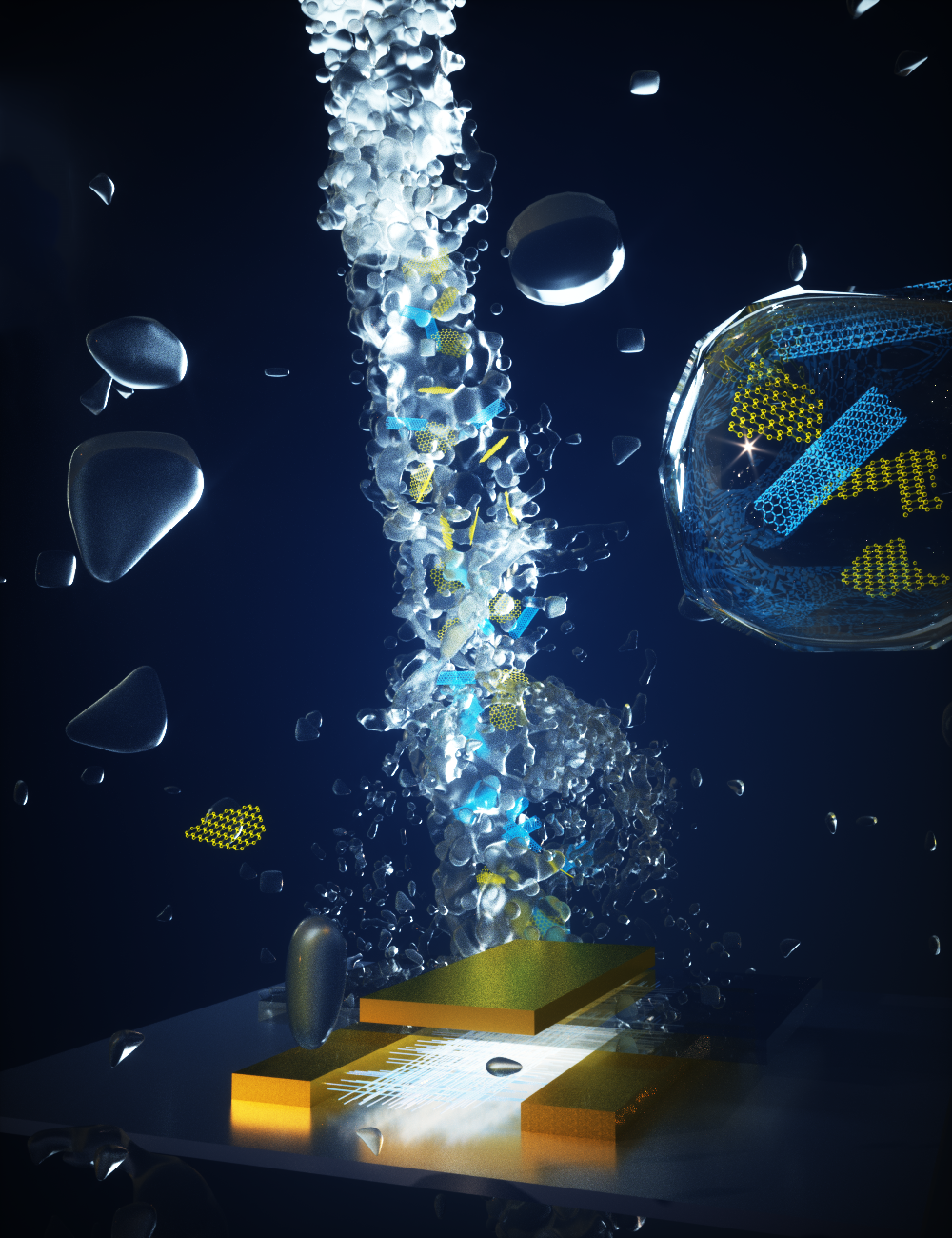A study published by Orb Media reveals that microscopic plastic fibers have been found in 83 percent of the world’s tap water. And, surprisingly–or perhaps not so surprisingly–94 percent of samples of tap water taken in the United States contained these invisible bits of plastic.
We have all certainly ingested them. And if the plastics are in our water, they must surely have made their way into our food.
Much of this plastic is believed to have entered our water supply through the air around us. It’s a result of simple abrasion from the plastics that are a part of our everyday lives—from the synthetic fibers of our clothes, to tire dust, to paints, to plastic bags and water bottles.
Consider that half of all the plastic in existence was made in just the last 13 years. When you combine that statistic with the fact that plastics are virtually indestructible, the scope of the problem becomes clear.

Plastic fibers found in tap water sample taken in Washington, D.C. Photo courtesy Orb Media
But how dangerous is it?
It is difficult to gauge the risk to our health that this issue causes. According to the Orb report, “Microplastics have been shown to absorb toxic chemicals linked to cancer and other illnesses, and then release them when consumed by fish and mammals.”
Furthermore, plastics such as expanded polystyrene foam (reasonably anticipated to be a human carcinogen), and polyethylene terephthalate (PETE or PET), (said to release estrogenic chemicals, which are linked to breast cancer and other diseases) are used widely in the food industry for takeout containers, soda and juice bottles and more.
For more on possible dangers and concerns, see the video below.
What can we do?
A few suggestions: Cut out the plastic bags, don’t reuse PET soda and water bottles, wear and wash your synthetic fabric much less often, share rides for your daily commute or use public transportation. And one we particularly liked: To avoid the plastics found in many paints, make and use milk paint.
For a fuller look at this story, see the report from Orb Media. And consider this quotation from Sherri A. Mason, Chair, Department of Geology and Environmental Sciences at The State University of New York at Fredonia, “There are certain commons that connect us all to each other, air, water, soil, and what we have universally found time and time again is if you contaminate any of those commons, it gets in everything.”







